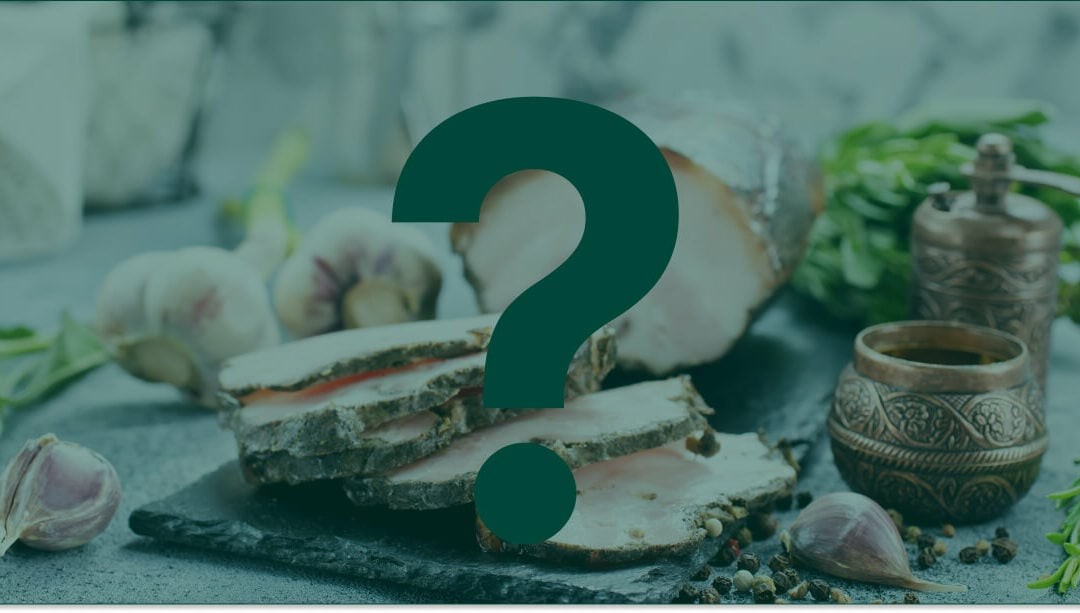Pork, a common ingredient worldwide, can be surprisingly hidden in many everyday foods. This can be a concern for individuals adhering to specific dietary restrictions, such as Islamic dietary laws, or those simply wishing to avoid pork for personal reasons. This guide offers an extensive list of foods that may contain pork, helping you make informed dietary choices.
Common Food Categories Where Pork May Be Present
The following table breaks down food categories and specific items where pork, or pork-derived ingredients, are often found. It also explains why pork is used in these products.
| Category | Food Item/Ingredient | How? |
|---|---|---|
| Meat Products | Bacon, Sausages, Ham, Pepperoni, Salami | Commonly made from pork; often used as toppings, fillings, or main dishes. |
| Deli Meats | Bologna, Mortadella, Prosciutto | Cured or processed meats that often contain pork or pork fat. |
| Gelatin-Based Foods | Marshmallows, Gummy Candies, Jelly Desserts | Often derived from pork; used as a gelling agent. |
| Fats & Shortenings | Lard | Rendered pork fat used in baking, frying, and cooking. |
| Snack Foods | Pork Rinds, Pork Cracklings | Snack items made directly from pork skin. |
| Baked Goods | Donuts, Pastries, Pies, Croissants | May contain lard or gelatin in fillings, glazes, or dough. |
| Soups & Broths | Creamy Soups, Ramen, Pho, Stocks | May contain pork bones, pork fat, or hidden pork-derived flavor enhancers. |
| Cheese Products | Parmesan, Grated Cheese, Cheese Powders | Some cheese products use rennet derived from pork stomach. |
| Sauces & Dressings | Worcestershire Sauce, Gravies, Salad Dressings | May contain anchovies or gelatin that are sometimes processed with pork. |
| Pharmaceuticals | Vitamins, Pills, Capsules | Gelatin capsules may be made from pork; common in pharmaceuticals. |
| Candy | Licorice, Chewy Sweets, Gummies, Jelly Beans | Often contain gelatin; pork-derived gelatin is common in chewy candies. |
| Frozen Treats | Ice Cream, Frozen Yogurt, Sorbet | May contain gelatin as a stabilizer. |
| Pasta & Noodles | Instant Noodles, Ravioli, Stuffed Pasta | May contain pork fat, bacon bits, or pork-flavored seasonings. |
| Asian Cuisine | Dumplings, Bao, Pork Buns, Spring Rolls | Many contain minced pork or pork fat as fillings. |
| Pizza Toppings | Pepperoni, Sausage, Ham, Bacon | Common pizza toppings are often derived from pork. |
| Processed Foods | Hot Dogs, Corn Dogs, Lunchables | Often contain processed pork, especially in mixed meat products. |
| Canned Goods | Spam, Canned Meats, Pork and Beans | Typically contain pork or pork-derived additives. |
| Confectionery | Frosted Cakes, Puddings, Trifles | Gelatin or lard can be present in fillings or frosting. |
| Alcoholic Beverages | Wine, Beer, Certain Spirits | Some alcoholic drinks use gelatin or isinglass (fish bladder), which can also be processed with pork. |
| Gums & Thickeners | Certain Chewing Gums, Thickeners in Foods | Some use gelatin or other pork-derived thickeners. |
| Snacks | Potato Chips, Crackers, Stuffed Snacks | Seasonings or fillers may contain pork-derived gelatin or flavorings. |
| Processed Cheese Products | Cheese Spreads, Pre-Sliced Cheese | May contain pork-derived enzymes or rennet. |
| Breakfast Foods | Pancake Mixes, Waffles, Biscuits | May contain lard or pork-derived shortening in the recipe. |
| Pâté & Spreadables | Liver Pâté, Terrine, Meat Spreads | Often contain pork liver or fat as a primary ingredient. |
| Gravies & Mixes | Gravy Powders, Instant Sauce Mixes | May contain pork fat or gelatin-based thickeners. |
| Prepared Meals | Frozen Dinners, Canned Stews, Meatloaf | Can contain pork ingredients as part of the recipe. |



Finding Pork-Free Alternatives: A Guide to Substitutions
Fortunately, numerous alternatives exist for common foods containing pork. These substitutions allow you to enjoy your favorite dishes without compromising your dietary choices.
1. Gelatin-Free Options for Snacks and Desserts:
Look for plant-based gelling agents like agar-agar, pectin, or carrageenan in snacks and desserts. Many brands now clearly label products as “vegan” or “vegetarian,” signaling the absence of pork-derived gelatin.
2. Pork-Free Processed Meats:
Opt for processed meats made from beef, chicken, turkey, or plant-based sources. Consider Halal-certified or Kosher-certified brands to ensure no pork is used in the manufacturing process.
3. Pork-Free Baked Goods:
Choose baked goods made with butter, vegetable oils, or plant-based shortening. Vegan and Kosher-certified bakeries often avoid lard entirely.
4. Pork-Free Cheese and Dairy Products:
Look for cheese labeled as “vegetarian” or specifying the use of microbial or plant-based rennet. Brands are increasingly transparent about ingredient sources, making it easier to identify suitable options.
5. Pork Substitutes for Cooking:
Explore alternatives such as turkey bacon, smoked beef, or plant-based meat substitutes available at most grocery stores. These can be used in place of pork in various recipes.
6. Sauces and Condiments Without Pork:
Seek out plant-based or certified Halal and Kosher sauces and condiments. Numerous recipes are also available online for making these sauces from scratch, using pork-free ingredients.
Navigating Food Labels: Tips for Identifying Pork
Carefully reading ingredient labels is crucial for identifying whether a food product contains pork. Here are some key terms to look out for:
- Gelatin: Often derived from pork, used as a gelling agent.
- Lard: Rendered pork fat used in cooking and baking.
- Enzymes: Certain enzymes used in cheese making may be derived from pork.
- Mono- and Diglycerides: Emulsifiers that can sometimes be derived from animal sources, including pork.
- E-Numbers: Certain E-numbers (food additives) may indicate the presence of pork derivatives. Research specific E-numbers to confirm their source.
Looking for Halal, Kosher, or vegetarian labels can also help identify pork-free options.
Halal Certification: A Reliable Guarantee
For those adhering to Islamic dietary laws, opting for Halal-certified products is the most reliable way to avoid pork. Halal certification ensures that the product has been independently verified to meet Islamic dietary requirements, including the absence of pork and pork derivatives.
When Halal-certified options are unavailable, consumers can advocate for local retailers to stock more Halal-certified items to meet the growing demand.
Final Thoughts
Understanding What Food Has Pork In It empowers you to make informed dietary choices. By carefully examining food labels, exploring pork-free alternatives, and seeking out Halal-certified products, you can confidently navigate the food landscape and maintain your desired dietary restrictions.
